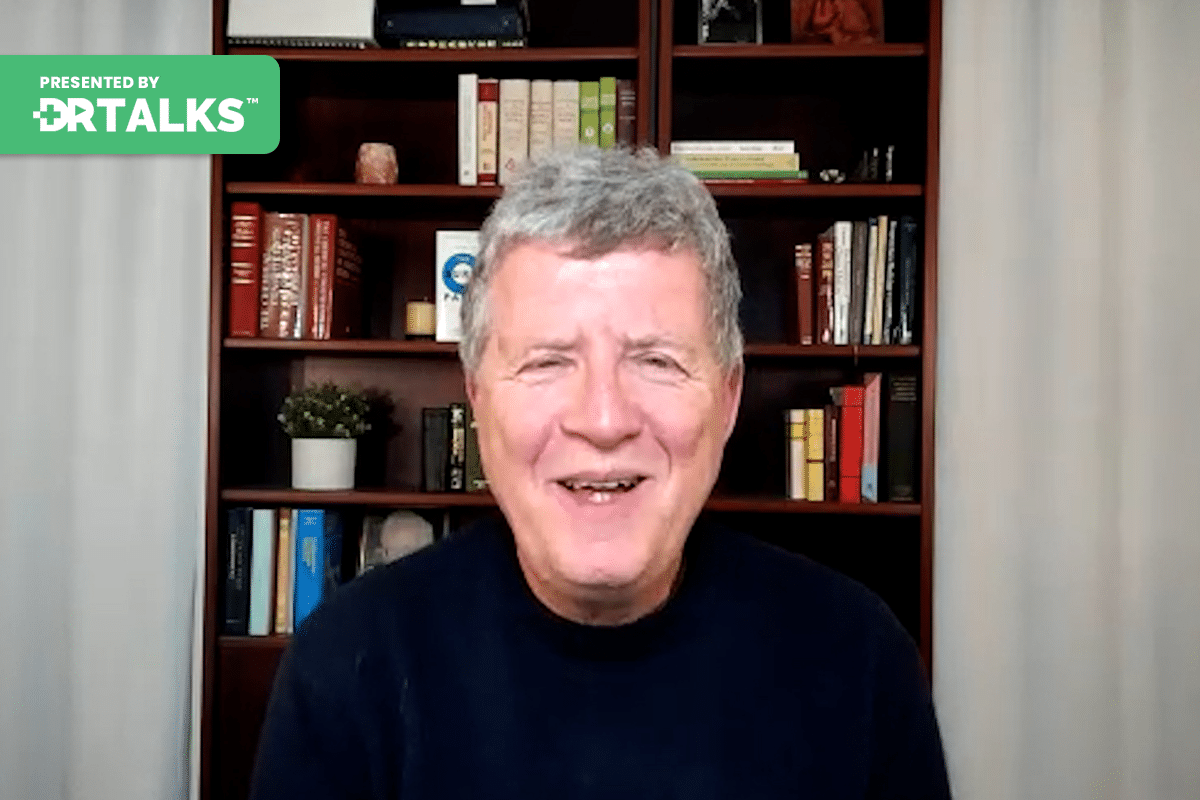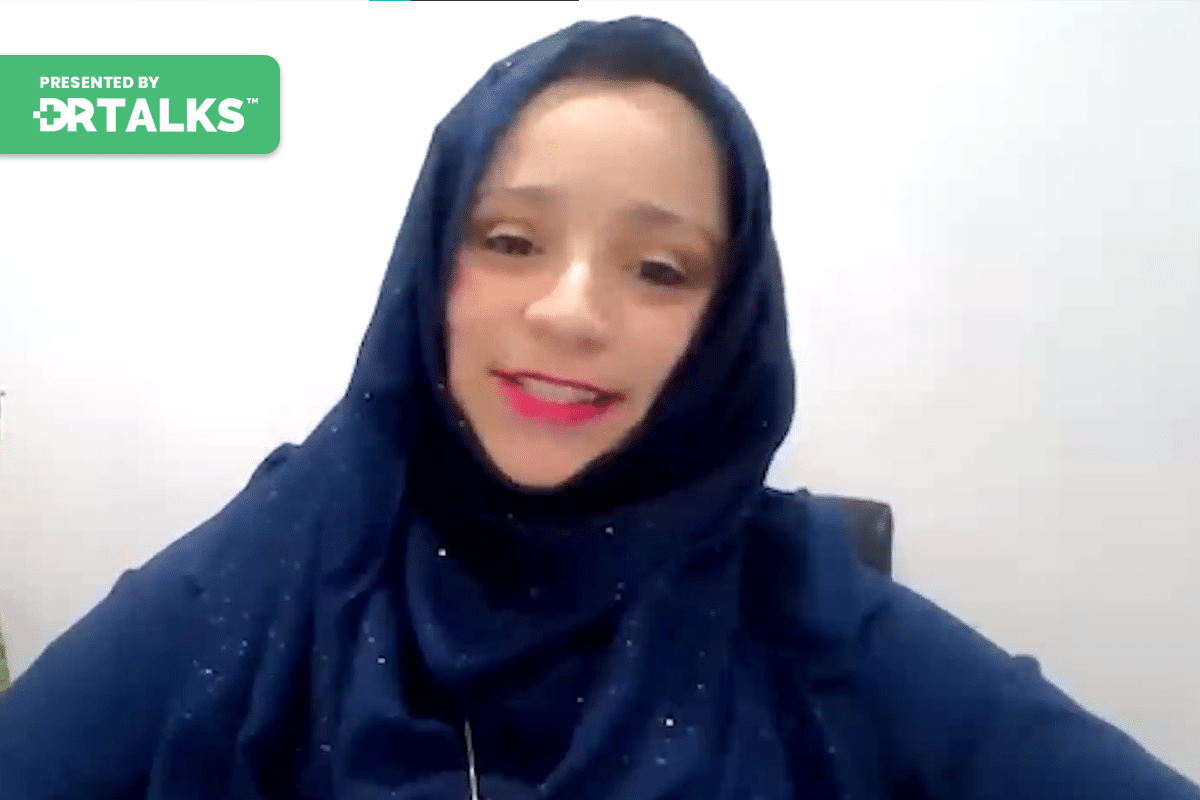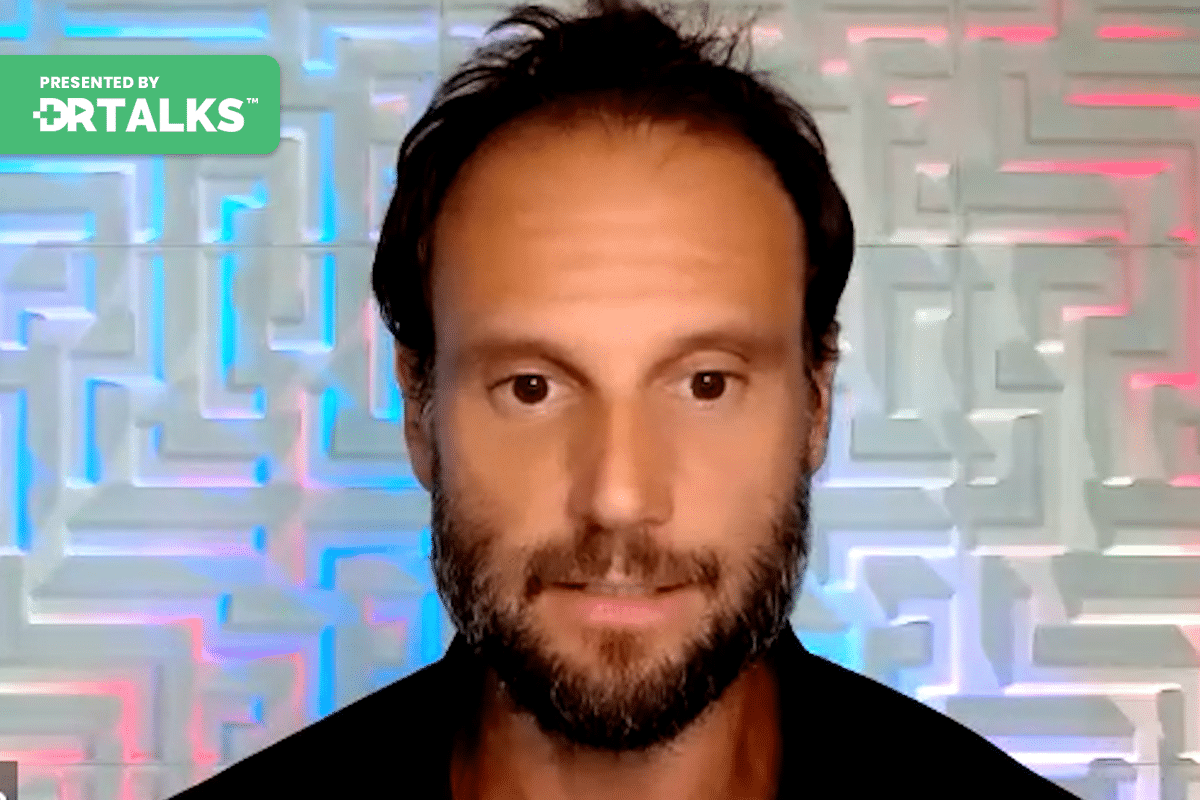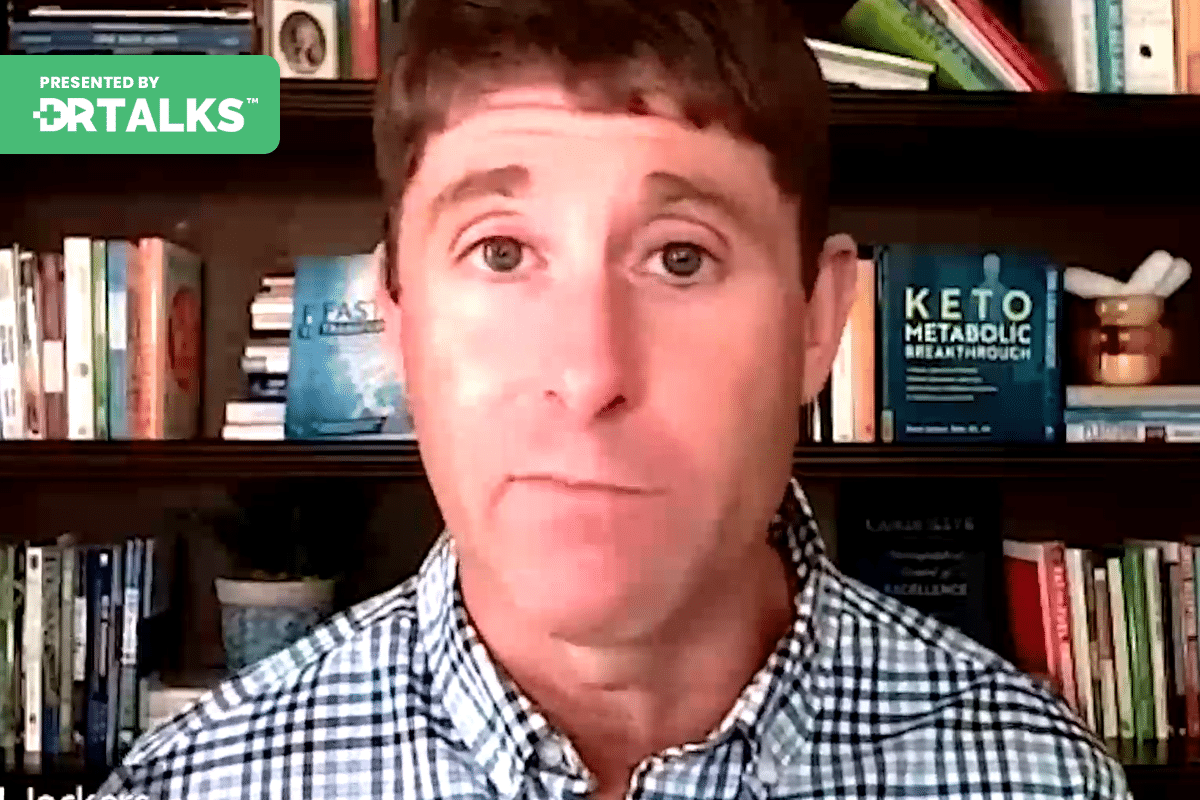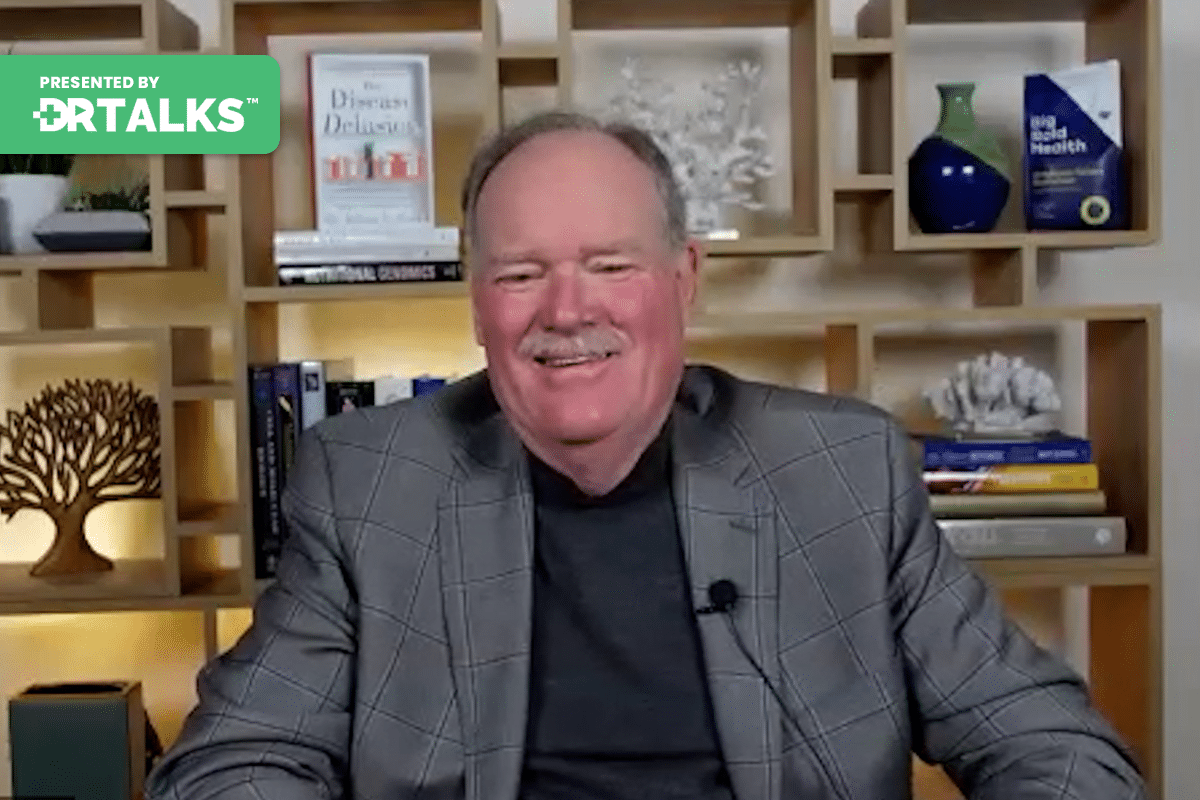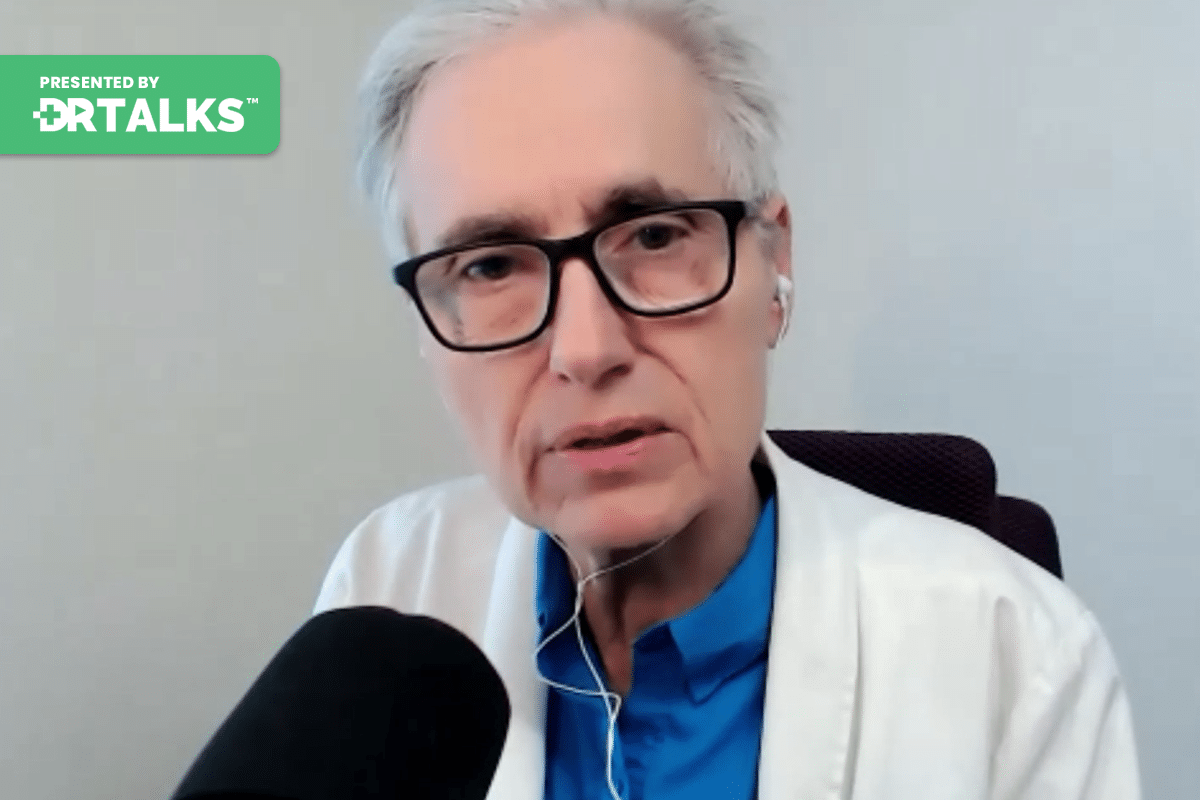Join the discussion below
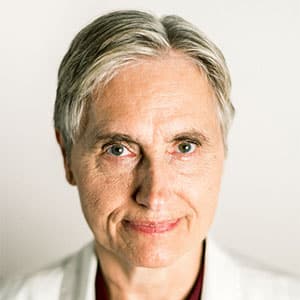
Dr. Terry Wahls is an Institute for Functional Medicine Certified Practitioner and a board-certified internal medicine physician. She also conducts clinical trials testing the efficacy of diet and lifestyle in the setting of multiple sclerosis. In 2018 she was awarded the Institute for Functional Medicine’s Linus Pauling Award for her... Read More
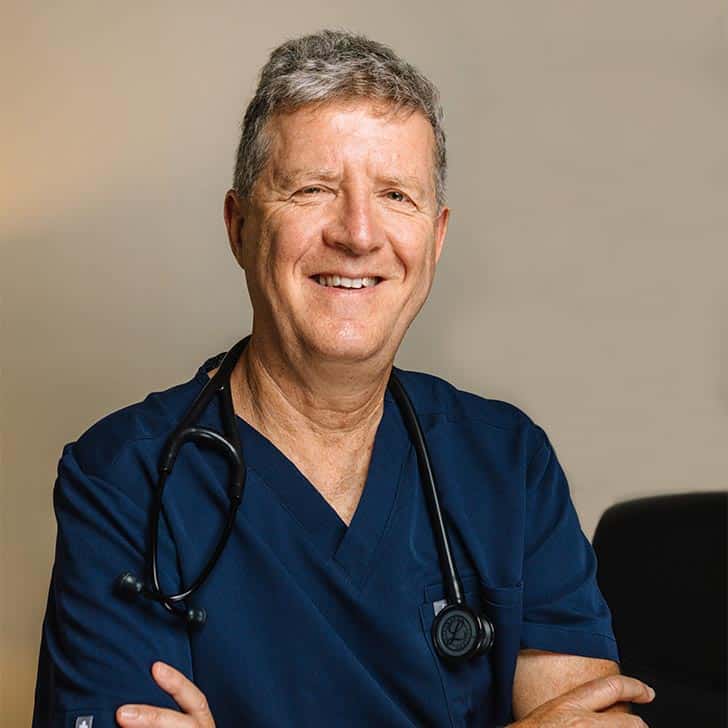
Isaac Eliaz, MD, MS, LAc has been a pioneer in the field of integrative medicine since the early 1980s, with a focus on cancer, immune health, detoxification and mind-body medicine. He is a respected formulator, clinician, researcher, author and educator, and a life-long student and practitioner of Buddhist meditation. With... Read More
- Learn how our cells’ biological survival methods can lead to damage in the brain and other organs, and understand the role of galectin-3 in creating inflammation and scarring
- Understand the role of modified citrus pectin in reducing inflammation and eliminating heavy metals
- Gather information about how stress accelerates disease and the steps to mitigate its negative impact, including the benefits of heart-centered meditation practices
Related Topics
Alzheimers, Autoimmune Diseases, Brain Health, Cognitive Pressure, Digestive System, Disease, Fibrosis, Fibrotic Pathway, Galectin-3, Health, Hypoxia, Immune System, Inflammation, Inflammatory Pathway, Ketone Bodies, Microglia, Modified Citrus Pectin, Multiple Sclerosis, Neurodegeneration, Neuroinflammation, Reactive Oxygen Species, Scarring, Sepsis, Stroke, Survival ResponseTerry Wahls, MD
Welcome. Isaac, I am so glad that you agreed to be part of the M.S. and Neuroimmune Summit. I really look forward to our conversation and so with that, I’d like you to introduce yourself and explain why you have this interesting area of expertise.
Isaac Eliaz, MD, MS, LAc
First, Terry, thank you for inviting me to talk about such an important topic. My background, I’m a native of Israel. I went to medical school in the Tel Aviv Medical School, graduated in 1986. I’m a little bit of an old timer, and I had an interest in complementary and healing approaches very early on since being a teenager. So I practice Taekwondo, Yoga, I was a yoga teacher. I learned Shiatsu. I learned Chinese medicine while going to medical school. So when I graduated from medical school and I did my internship, I knew I’m going to pursue an integrative model and holistic model. It was my lifestyle, my philosophy. I came to the United States. I did a Master of Science in Chinese medicine. And then I studied vertically different healing methods: Classical Homeopathy for years, a lot of hands-on work. Got very involved in meditation in a very deep way for decades, a lot of time by myself every year in the mountains for a few months a year for 20 years, and for ten years guided meditation has been my work. And so I have this very multidisciplinary holistic approach. My focus is on cancer, on inflammation-driven diseases, and on how to cure illnesses. And while doing all of this, I’m also a bona fide researcher with an AIDS grant and publications.
And as part of my work with inflammation is with the survival alarming proteins. And I discovered a way to attenuate inflammation and fibrosis, which becomes very relevant for neuroinflammation. And the nervous system has always been of great interest to me. If I would be just a conventional doctor, I would probably be a neurologist, but maybe with internal medicine but I hold an holistic approach. The view of the nervous system as part of your whole body system, as part of a digestive system, of your mental digestive system. It is present in Chinese medicine, it has been present in my thinking for a decade. I mentioned to you in one of our conversations, we had a Chinese medicine study group in the nineties and we were projecting this going to be an epidemic of Alzheimer’s and dementia and memory issues as part of the weakening of our digestive system. The weakening of the earth’s element of our nourishment is part of having over busyness so we can not really digest properly. And that is how it looks right now. And the reason why this is so interesting because it is something we can do about it. We can actively take a stand and try to mitigate and change the outcome. That is really your goal when you do this. That is my goal when they participate.
Terry Wahls, MD
I love this. And I got your book, “The Survival Paradox” and read that. And I really appreciated that. We talk about the foods that we are eating and how that has a big impact on our health. So let us talk about The Survival Paradox. Can you explain that to our listeners? What is that?
Isaac Eliaz, MD, MS, LAc
The Survival Paradox introduces a new paradigm understanding of health, of disease, of our life. And the paradox is that we are wired, we are built to survive every cell in our body, innately the drive to survive and the action we take to survive are the same actions that actually cause us inflammation, fibrosis and drive diseases of all kinds with a lot of emphasis on neuroinflammatory diseases. So because it is built within us it is automated within us, within a fraction of a second through the sympathetic system, through the autonomic system which is autonomic we can not control it. And we go into either fight or flight. Fight, which equates biochemically to inflammation. In flight or fear of flight, that equates to creating isolation, hiding, and creating a shield. We then create both emotional isolation and psychological isolation, but also this shielding is what creates fibrosis, which ends up causing organ dysfunction.
Terry Wahls, MD
Hold on for a moment. So everyone, when we are hearing the word fibrosis, think of that as scarring, thickening of the scar tissue in the lungs, in the liver, in the heart. That is the fibrosis term. Now back to you, Isaac.
Isaac Eliaz, MD, MS, LAc
And in the brain, the structure would be different but it is similar. So what happened is that when we work with the sympathetic system, we can take a deep breath, we can relax, we can do yoga or taichi or music, whatever allows us to go to a place of balance, of safety, of harmony with the survival response just melts away, at least temporarily, and we can shift back. Biochemically, we are triggered to survive. There are certain proteins called alarming proteins, proteins that sound the alarm. And one of the key ones that I’m interested in Galectin-3 which is about 10,000 published papers. I coined it as the survival paradox protein because it instigates an inflammatory response, a fibrotic response, and an immune dysfunction response. And all of these would either for some people, it would go through most of the inflammatory pathway, for others through the fibrotic pathway but eventually, the same drives to protect us will end up causing, as you said, scars. And the scars from a functional point of view is a nonfunctional tissue. So it happens in our body and it happens in our brain. And so when we understand this movement, we understand what drives it. We now have an opportunity to change the outcome either by something as simple as blocking Galectin-3 with modified citrus pectin which I have done so much research on. And there is published research specifically on Alzheimer’s plaque and neuroinflammation and other neuroinflammatory diseases. And also to change our lifestyle, what we eat, how we think, how we feel, how we respond to the world outwardly, and how we respond inwardly.
Terry Wahls, MD
So I want to stop for a moment. Did I hear you say that with a modified citrus pectin, that you can block the Alzheimer’s plaque?
Isaac Eliaz, MD, MS, LAc
So what happened? It blocks Galectin-3. So if we look at neurodegenerative diseases and some of them have an autoimmune component of causing an infectious component, a viral component is a little bit more complex but if we look at it in general. It is really a subcategory of neuroinflammation. The other is driven by high levels of oxidative stress of inflammatory compounds all of them driven by hypoxia, by lack of oxygen. We then intracellularly will create a hypoxic response and there are different factors, hypoxia-inducing factors into one and the cell no longer functions normally from a metabolic point of view. So if we take the brain and we study the brain with the very basic models, it is called perfusion injury reperfusion which means you cut the blood supply and you turn it on. That is something that happens during, for example, surgery when you have a heart, lung, lung device while they connected that, what happened with the vascular surgeon is that you have to shut down the circulation to certain parts of the body and the organ that is specifically sensitive to it is the kidneys and the brain. Interestingly, in Chinese medicine, the brain is the tissue of the brain is controlled by the kidneys so it is interesting. So you have this very short disruption, the body, “Oh, my god. I’m choking.” That is a classical survival response.
Galectin-3 comes up. So if you look at brain tissue and you create this model where you shut down the blood supply and you restart it which will happen in life doing strokes, during TIA but also during times of stress with a little bit less blood supply coming to the brain or there is a lot of, of cognitive pressure and the brain feels like it does not have enough oxygen. So when you look at this, you will see that what happens is Galectin-3 gets triggered and neuroinflammation is produced. When you apply modified citrus pectin to this tissue you reverse the damage by blocking Galectin-3. So for example, the Alzheimer’s blood is 20 times the density of Galectin-3 compared to normal brain tissue. And so it is not surprising, Terry, because the brain can not afford to be under danger. You know, we always maintain energy supply to the brain. We take it away from muscles, from digestion, from other organs. The brain is very demanding because this amazing supercomputer that nothing is as close to it has to run everything in our body and a lot of things it does, we actually do not even know what it does. In this way, there is an alternate energy system with ketone bodies. So the brain has to survive at any cost. And that is why it is sensitive to a survival response to an abnormal survival response that will drive inflammation. And that is why the smallest attenuation in the brain will have very deep consequences in our body. And we will see a lot of correlation between what happens in our bodies. Let us say we take our immune system in the cell, typically the cleaning cells, the macrophage, and the microglia in the brain. They are really like brothers and sisters in microglia get triggered, among others, by Galectin-3 by a sense of danger and then they get turned on, on a chronic basis. Exactly what happens in sepsis. I have shown in my research. In sepsis, it is exactly the same. And then once you get the inflammation running, then you get in trouble.
Terry Wahls, MD
Galectin-3 is running amuck in the body and also in the brain.
Isaac Eliaz, MD, MS, LAc
Yes. And when it does it is like the shuttle. So why is it so important? Because it senses a problem. It has these receptors. It can bind to different ligands and it can either deliver them to the problematic tissue and, or it can go to the problematic tissue and there it can bind to these ligands and can bind to the cell surface. And these can be inflammatory ligands, immune disruptors, and sticky molecules that create like thrombosis stickiness. All the growth factors that will grow blood vessels and in which eventually, as part of the growth process, will create damage and will create fibrosis. So in this sense, a Galectin-3 mechanism of repair is inflammation-driven and results in fibrosis. It is not a smooth process that leaves no aftermath.
Terry Wahls, MD
Now, in the brain, do we see fibrosis in the brain? Is that the increased Alzheimer-related plaques that we might see?
Isaac Eliaz, MD, MS, LAc
Yes. So it is not the same structure. It is exactly right. We will see tissue. It becomes dysfunctional, definitely. And in the end, it is not in the brain. Everything is a little bit different in pathological structure.
Terry Wahls, MD
And I’m assuming that in the MS and neuroimmune patients, so many of the other rheumatologic diseases or having fibrosis elsewhere. And so in the brain, this might be with the increased amyloid and I assume probably also the accelerated atrophy in brain volume loss.
Isaac Eliaz, MD, MS, LAc
Definitely, because the definition of tissue dysfunction, and what is interesting is that when there are a lot of these processes have the potential to be reversible.
Terry Wahls, MD
Okay, so let us do what we can to either stop it or reverse it.
Isaac Eliaz, MD, MS, LAc
Even if it is a, so I think, and again this prevention is easier, especially when the brain is, when the rain is slow to recuperate, but it is the myth that the brain cells do not, do not change, and do not grow. And we already know that the plasticity of the brain stays even the 78th and or decade even later. I think we want to recognize the role of neuroinflammation and then understand the very basic mechanism. We have to support blood supply to the brain.
And blood supply can be disrupted to the brain because of this sclerotic disease, because of certain hyperviscosity, or many times it can be structurally. You know, if we have a blockage in our airway, oxytocin, and there is no good supply coming from the vertebrobasilar into the brain is very common. And so we want to make sure that there is a good flow of blood supply to the brain and there is a good drainage, often mechanical is really important. And we have to reduce anything that can drive narrow metabolic pressure and also neuroimmune pressure, which is an expression of this. So the immune system will use inflammation as its tool. It will use metabolic changes. It is a tool and so we need to try to regulate. In the moment, we shift to a place of safety many of these pathways just relax. They just melt away.
They allow the normal pathways to come back because a cell responds based on what it senses from its environment. If it senses from the environment that there is a lack of oxygen, there is danger that there is attenuation of normal function, it will go into a protective mode and this protective mode is very damaging. So either it will try to produce energy faster through glycolysis, which is very fast, 100 times faster than normal energy production but extremely inefficient five to six percent. So two ATP is compared to 18. If you think about how much substrate you need to use to get 100 times more energy, 2000 times lots of byproducts, lots of acidity, lots of lactic acid and so anything that will help the brain will help to mitigate it. And when we want to understand what will help the brain is one thing that will help us generally will be good for the brain, but Alzheimer’s is considered like diabetes type three. So any metabolic imbalances will directly affect the brain, there is no doubt. And will help in all conditions to various degrees. That is one area, we have to really introduce a means to improve circulation to the brain and we have to keep using the brain just like we use the muscle. We have to exercise the brain while we allow it recovery time.
So the very basic thing, it is so basic that many of us fail to do it, is good sleep, good hydration, stress control, and then it is using something like that that will block Galectin-3. This is an example. Then we want to see how can we move the brain into more parasympathetic by definition, not necessarily never protective effect. So when the brain gets into a new excitatory effect, a lot of glutamate, a lot of stimulation, it really damages the brain because of the wear and tear until you already mentioned it and that is why you see a relationship between substances that pushes the glutamate as it pushes new excitatory pathways in brain damage. If it is ADHD, if it is autism if it is neurological diseases. And so we want to attenuate it. So there are some compounds that have the ability to shift it to a level protective mode from glutamate to GABA. But we also have to recognize what is causing our brain a sense of danger in itself. That sense of survival in a crisis. We talked about circulation and inflammatory pressure, but one of the ways that the brain regulates itself is the brain’s boundary, which is very similar to what happens in the gut. The gut lining gets disrupted. We got a leaky gut. Big molecules come in and we get an immune response, an inappropriate immune response. Now it is much more acceptable than 20, 30 years ago. The same thing happened in the brain with the blood-brain barrier. So Galectin-3 is not the only one disrupting the blood-brain barrier. It allows a bigger molecule that is not supposed to come into the brain and you get an immune response that is in there. That is really the neuroimmune issue. And the brain, the macrophage of the brain, the microglia come into play. They want to clean up the mess.
Terry Wahls, MD
So that the Galectin-3 opens up the barriers to the brain and lets the immune cells in and then the microglia are more active in the immunoresponse in the brain.
Isaac Eliaz, MD, MS, LAc
It is not necessarily that it leads to molecules that are immunogenic and then it likes heavy metals coming in so that is one compound. But we can not isolate, not only Galectin-3, we are bombarded with Mycotoxins. Mycotoxins are in areas that are oxidized, that are in lipid-soluble areas within the brain. There are a lot of phospholipids just like the gut. We have got heavy metals, we have got environmental toxins that are devastating to the brain and we have got pesticides and they all work with each other and we are bombarded with pesticides. If there is one thing that is of great concern it is pesticides because if you have mold toxins, you can put up a filter not enough, you change the house, but you can not escape pesticides, at least not right now. Even if you eat organic. Everybody is blamed for that because we spray 330 million Pounds of glyphosate a year just in the US. If they get it is illegal in many other countries. It is not affecting the outdoor industry in our country and because it is water soluble with rain, it can go in a parallel field for miles. So glyphosate is very similar to glycine, the smallest amino acid, which is an immune and neuroprotective amino acid and it switches with it because it is so similar. And then it becomes interior excitatory. Also, it helps to deliver certain heavy metals and disrupt absorption in the gut, and it will do the same through the blood-brain barrier. So now you’ve got pesticides and toxins that are affecting our system. And these are an ongoing issue that we have to address.
Terry Wahls, MD
So all this trouble is in our brains. What do we do?
Isaac Eliaz, MD, MS, LAc
So, putting aside the different issues like special exercises and special methods of life stuff and really putting it aside, we want to address one. We want to address Galectin-3 by taking a modified citrus pectin, by taking Pectasol. So we want to try on an ongoing basis, clear pesticides and toxins from our bodies. So interesting, all the poly urinate, alginates, modified. citrus pectin, they are very powerful chelators of heavy metals for environmental toxins. I have done a lot of work in the last few years on finding a solution for removal of glyphosate because I recognize I overlooked it and it is so important. So I developed a product called GlyphoDetox. In GlyphoDetox we are just finishing the second layer of studies, so we have now more subjects.
And except for one outlier, everybody, we are seeing a significant reduction in glyphosate. I’m very excited because we may have a solution and some of the components in the formula have specifically benefits on neuroinflammation and mitochondrial function. A fulvic acid from shilajit so we want to address this and we want to support circulation. Either with herbs, different herbs if it is curcumin, or quercetin, or berberine, a key, key, key component is honokiol from Magnolia Bark because it has the ability to penetrate the blood-brain barrier and it shifts glutamate into GABA. So it moves from an excitatory to a normal protective effect. It has a very good effect on reducing chronic inflammation, including within microglia. It has an intracellular effect and can be integrated with the extracellular effect of modified citrus pectin. We have published papers on this. It is one of the discoveries.
Terry Wahls, MD
Now we are talking about two products. One is the Pectasol, which is the modified citrus pectin. But then there is this other product you just mentioned which is protecting against glyphosate.
Isaac Eliaz, MD, MS, LAc
The glyphosate, it is called GlyphoDetox. It is a formula. But the third component is we want to protect the cell interests cellular. We only want to shift the cell into normal metabolism. So they are things like berberine and curcumin, quercetin, and honokiol have an amazing effect because it is from the magnolia bark and it is a multi-factorial effect. You see, they research honokiol for cancer. And you see a lot of research on honokiol on neuroinflammation. It is gotten to the clinic as there is no incentive for anyone to spend money on doing clinical trials when you can not patent it. But honokiol, when you take honokiol, you will feel your whole system relaxing, like your whole system like chilling down, coming down. So when we move our brain and our nervous system and our being into more of a parasympathetic, into more of a relaxed mode, it will naturally have an effect on our mental function and neurological function. We all know that when we are stressed, it is harder to remember. It is harder to express our thoughts clearly. It happens to all of us, and as we age, at least in my experience, it gets worse.
Terry Wahls, MD
Yeah. Absolutely. We have talked a lot of stuff here. The sympathetic, parasympathetic, the role of Galectin-3, driving the inflammation the fibrosis in the role of modified citrus pectin to calm that. And this interesting anti-glyphosate product, which I’m thinking like Isaac, I need to check that out because I live here in Iowa. I’m surrounded by people who are spraying glyphosate all the time. So even in my organic garden, I know the rain is coming down with glyphosate.
Isaac Eliaz, MD, MS, LAc
Some of my subjects are from Iowa in the study. It’ll be an issue that nobody’s asking us if we want it or not. It is kind of being forced on us.
Terry Wahls, MD
It is been forced on us and try as hard as we can to not have that in our system. We are absolutely stuck. Isaac, what would you say the role of stress is for people who are listening to the summit with M.S. and neuroimmune issues?
Isaac Eliaz, MD, MS, LAc
So stress is really a survival response. And then we are under stress on an ongoing basis and a different kind of stress, there are stress of pushing ourselves is part of building endurance like we exercise and we do a little bit more of stress as part of we are doing something we really love doing and we are pushing this not always damaging. The stress of just being in stress, emotional, mental life. It wears us down. It increases wear and tear and brings up the level of Galectin-3, but mainly it shifts us into a chronic sympathetic mode, which is devastating for our neuroendocrine system, for glucagon goes up and cortisol goes up and the IGF one goes up. And then as a response, you have got insulin surge and you have got insulin resistance. And here you are affecting not only metabolism inside your body but metabolism in your brain.
So the same basic shifts are so beneficial in so many ways and on many levels when you see a lot of studies showing love and compassion-based practices, and heart-based practices are very beneficial for the brain. They have shown, UCLA has done amazing studies where they showed a document that meditated. The longer period of time they meditated, years wise, the longer they meditate every day, and the more they are trained, the more benefits in the gyrus and sulcus, the sulci in the brain, and the cortex. They retain the structure of the cortex. And one of the reasons why it is that we move in a place where we are less reactive and reactive it ties back to our opening discussion about the survival probabilities, because this when we are in survival mode, we have to react and the reactivity is built carrying into every cell in our body. Every cell in our body wants to survive. It wants to take nourishment and it pushes away with what it does not want. This is not mine. It is not good for me. Go away. I want this. I want this judgment in aversion from a meditation point of view. But physiologically, biochemistry, that is what happens.
The only organ that functions differently is the heart. The heart takes all the dirty blood from all the organs with the venous system and says bring it on with an open heart. If it does not take the blood, we are going to be dead. It needs the blood. It needs what the body does not want. It connects with the universe and it gives away clean, nourishing blood. And only once it is done giving, it relaxes and nourishes itself through the coronary arteries outside of the heart. It is the only organ. So when we shift to this mode, when we start operating from our heart that we have a capacity to do, not so simple to train, but profound in we sometimes we are on, sometimes we are off. Then suddenly we are not reactive, we are responsive. What do we mean? The same stuff that comes from the body that creates a negative reaction from a cell. I do not want it. It is the heart. It is responsive. I have enough compassion to take it on because we connect with the universe and all this stuff we do not want serves as wood to the fire of nourishment. And the nourishment of the heart is profound because there is nourishment through the blood supply.
It gets to every cell in the body. There is nourishment through the electromagnetic field. The electromagnetic field of the heart is 100 times bigger than the electromagnetic field of the brain. So at any moment how we feel in our heart gets to every cell in our body. We can feel it as we talk, and it affects the people around us. On the deepest level, the intention of the heart which is taking it right through the blood. It is taking it right, we know that water has different structures, but it takes it right to the electromagnetic field and it takes it right with the intention itself. In Buddhism, you call it the body, speech, and mind. This quality now is affecting every setting that we are about, including our brains. And people can feel it. They are relaxed and their heart is open. Suddenly the memory works better, like when we need to remember something and we try to write, what do we do? We just relax, and it comes back.
It is important to recognize the pulse of the heart and the heart does have its own brain, tens of thousands of cells that have their own independent processing, not only the rate of the heart that is independent but also the heart thinks. And from a meditation point of view, when you are trained in this, so when you talk like, right now I’m more aware of it. So when I talk to you, I hear myself speaking from here. I think from here I do not think from here actually feel it processing right here. And then it can feel like my body is different. You know what bothered me 20 minutes or half an hour ago is not here. Not because I pushed it away, but because I’m operating in a place where it is all okay, when it is all acceptable, when it is all embraced and obviously the world needs more of this. And that is why people like you and me talk about it. And the bad news is the world needs more of it. And the good news, when it is really dark, every small light, glowing liquid makes a big difference because if it was full of light, it would make it. We would not need it. But the brain is this amazing system that we know a fraction of.
And so I think it is important to be humble about understanding of the brain and to recognize that there is a reality there that is bigger than what we can comprehend logically because the logical processing of the brain is a tiny part of the brain. The brain is most active while we are asleep. There are so many parts of the brain, we have no idea what they are doing. So there are different dimensions of understanding, the different dimensions of connectivity, and they are present everywhere and they are present in the past, in the present, and in the future. And when we breathe, when the air comes in, the molecular air in our mouth is connected to the whole universe in the past, in the present, and in the future. And it goes straight through the lungs, into the heart. So when we connect with our heart, we connect our infinite healing potential. That is what I call it, what I coined open heart medicine.
And in this sense, when we are there, the brain can regenerate. And I have seen a lot of it in my own experience with long Covid. It really affected my brain function. And it is when you connect with the heart that things shift and in this sense that the very unique and meditation work, it is not just basic it is like mindfulness where when we truly let go then our healing intentions come from this effortless place. And so we are connected to this infinite source of healing and everything expresses itself out of it. Judeo-Christian will say, we are made in the image of God, That is the Bible in Genesis. So it means that every cell in our body has this divine quality. So when we connect with this in the heart, in many traditions symbolize it including in Judaism, Judeo-Christian, they see God examines the heart in the kidney. That is how it figures out that the kidney is interesting and relates to the brain in Chinese medicine so that is really where you can figure out who we are, what our intentions are. So when we connect with this, it gives us an enormous source of healing. To connect with it, we have to let go of the survival response, which is very self-focused. And then on one level, so simple, we blow Galectin-3, we take a more effective perspective and we get the stories about people whose memory gets better and mental function gets better when they take more effective perspective.
Terry Wahls, MD
I have to chime in here. So I have spinal stenosis and I have been having more and more trouble with back pain. And as I upped my Pectasol, I discovered that my back pain is much, much less. And just last week, I was able to stand for 90 minutes giving my lecture for the doctoral physical therapy students who have not been able to do so for several years. Isaac, but I was very impressed. So thank you so much.
Isaac Eliaz, MD, MS, LAc
Yeah, I see. It is interesting. I get lazy in the evening. There is something about the full dose that is needed so we get enough coverage because basically, it is something that drives inflammation. It just has to be blocked. It is so interesting. That is an amazing story.
Terry Wahls, MD
Okay. Isaac, I could talk for hours with you, but we should wrap this up. So what is the one message you would like to have all our listeners hang on to from this really wonderful conversation?
Isaac Eliaz, MD, MS, LAc
I think that each of us has an infinite healing potential. Not everybody is going to be a miracle, but anyone can be a miracle, truly. And when we connect with this and we relax into it, then every method we use becomes more powerful. And within it, we have to address this imbalanced survival drive which keeps us alive, which keeps us alive at a cost. It is as simple as it is why I often say motivation is pain is the most important supplement and not because I developed it, I did the research because it addresses why I got lucky. Nobody thought it is so big, it was focused on cancer. And then I noticed inflammatory benefits. And then at the same time, every moment, every breath, we have a choice of shifting from a survival mode to a place of open heart and balance and nourishment. And within it, the healing process is radiating and resonates inwardly within us and from us outwardly to anyone that needs it. And this interdependence we have just we have an interdependence between 50 trillion cells in our body, the interdependence between all of us.
Terry Wahls, MD
That is beautiful. Now, Isaac, where do people find you?
Isaac Eliaz, MD, MS, LAc
So they can look me up at the Dr. Eliaz, dreliaz.com I have what I consider a good quality newsletter with the whole research team, and I really hope in later and towards the end of this year to start teaching more meditation and healing in the United States than internationally. It is time for me to do it here at home and share this decade of training. So just visit my website and you will find anything related to me on the website and you can join the newsletter end and here where, when I speak and what is my next lecture, etc.
Terry Wahls, MD
So, Dr. Eliaz. Can you spell your name?
Isaac Eliaz, MD, MS, LAc
Dreliaz.com or .org both of them will work.
Terry Wahls, MD
Okay. Well, this has been wonderful. Thank you so much, Isaac.
Isaac Eliaz, MD, MS, LAc
Thank you for doing this.
Downloads

